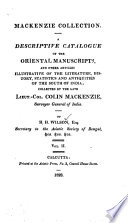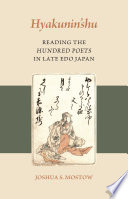In a world obsessed with what’s next, it’s easy to overlook what came before. But if you’re serious about understanding the roots of storytelling, philosophy, and human nature, the 11th century has more to offer than you might think. These authors didn’t just write—they shaped the intellectual and cultural DNA that still influences our world today. Whether you’re a curious reader or a modern creator, these are the voices worth revisiting.
For more recommendations, you might also enjoy exploring best poetry books, best American authors, or best classic literature books.
Must-Read 11th Century Authors Today
1. Akazome Emon, 956 (estimated) -1041
The exact year of Akazome Emon’s birth is unknown, but we do know that she is the daughter of Akazome Tokimochi. The earliest event of her life that can have a sure date occurred in 974 when she was in her late teens. It was a poetic exchange between Emon and Fujiwara no Michitaka. Also, she married a Confucian scholar and poet in her late teens. When her husband died, she decided to become a nun and lived out her life in tranquility long enough to see the birth of her great-grandson.
Emon was best known for her waka poetry, submitting poems to many competitions of her era. Her personal poetry collection, known as the Akazome Emon Shu, is one remaining work of hers. Many of her poems were included in court anthologies from the day, including the Kin’yo Wakashu.
“So, then, so be it! At Narumi Will I make my home! So very far away among The pine tops.”
Akazome Emon, Wakapoetry.com
2. Borena of Alania, unknown
Queen Borena of Alania was the Queen Consort of Georgia, the second wife of Bagrat IV, who reigned from 1027 to 1072. Little is known about her history because of the lack of written history of the medieval Georgian era. She had at least two children and was last heard of on her husband’s deathbed.
It was Borena’s contribution to the Georgian Orthodox monastic life that she is best known for. She was responsible for paying for the Georgian Kapata Monastery on Mount Zion. She is also believed to be the author of a hymn to the Virgin Mary. This hymn is on the Theotokos icon attributed to her time. Today the icon is in the Lenjer Church in Svaneti. Though she was not a prolific author, she deserves a spot on this list because she is one of the few authors from medieval Georgia.
3. Kshemendra, 990-1070
Kshemendra was a historian, translator, and poet from India who wrote in Sanskrit. He was born to a wealthy family and was the son of a minister, which meant he received an excellent education. He studied literature and philosophy and became a Vaishnava as an adult. Much of his writing focused on Vaishnavism and Buddhism. He was good at abridging long texts, and some of the works attributed to him may be abridged texts of other writers.
Today, about 18 works credited to Kshemendra are still available to read, and there are around 14 that are referenced in other literature but have been lost to history. He wrote devotionals, satires, poems, and abridgments. His historical work, *Nr**pavali,*and his didactic work, Nitikalpataru, are two popular ones.
“The Prince should never allow any room in his mind to bad thoughts and wishes, for bad wishes bear bad fruits and good and moral wishes result in bringing prosperity to him and to his kingdom.”
Kshemendra, Archive.org
4. Murasaki Shikibu, 973-1025
Murasaki Shikibu was a poet and novelist from Japan during the Heian period. Her name was a title that meant Lady Murasaki, but her real name was unknown. She served as a lady-in-waiting in the Imperial court. The author was born to the northern Fujiwara clan in Heian-Kyo, but her family was of a low rank at the time of her birth. Her grandfather and great-grandfather were well-known poets, which likely sparked her love of writing.
The best-known of Shikibu’s works was The Tale of Genji, notable as being one of the first novels in the world. It tells of Genji, the Shining Prince and son of an Emporer, while also depicting the realities of country life in Japan at the time. The Japanese work was written between 1000 and 1012. During her time as a lady-in-waiting, she wrote many poems. While in court, Shikibu also learned Chinese and wrote several Chinese poems. Over 128 of her poems are collected in Poetic Memoirs. She was credited for helping to create and develop the Japanese written language with her works, as the Japanese script was created in the late 9th century, and her novels helped write it down.
“Now that the end has come, and I am filled with sorrow that our ways must part: the path I would rather take is the one that leads to life.”
Murasaki Shikibu, Goodreads
5. Anselm of Canterbury, 1033-1109
Anselm of Canterbury was a Benedictine monk and abbot of the Catholic Church who also served as the Archbishop of Canterbury from 1093 to 1109. Anselm was born in what is today Italy. Little is known about his childhood, but at age 15, he desired to enter the monastery and was refused because his father would disagree. His father eventually changed his faith and entered a convent himself, leaving Anslem alone. He spent three years wandering through Europe before entering the abbey at 27. This was where he began shaping his theological and philosophical thoughts and writing. His ideas and political affiliations caused him to face exile twice, and the Roman Catholic Church eventually canonized him.
Anselm was known for his exceptional intellect and has been called the “father of scholasticism.” In his writing, he tried to record the tenets of the Christian faith. His Monologue was written in 1075 and 1076 and attempted to show how reason could convince someone of the existence of God. It also speaks on the attributes of God. At the time of its writing, critics did not like the lack of scripture verses used in work.
“God having that attribute is precisely that attribute itself.”
Anslem of Canterbury, Press Books
6. Omar Khayyam, 1048-1131
Omar Khayyam was a poet, philosopher, and mathematician who hailed from Persia. Known as a “jack of all trades,” he excelled in science and writing. Like many 11th-century authors, little is known about his life, but some scholars believe he was the child of a tent-making family due to his name, which means tent-maker in Arabic. He grew up in Nishapur, where he received a thorough education, then rose to favor in court. When he lost that favor, he took a pilgrimage to Mecca, where he was eventually called to be the court astrologer for Sultan Sanjar. He died in 1131 due to ill health.
As a philosopher, Khayyam often wrote on the subject of mathematics. He was influential in creating the idea of real and irrational numbers and also developed what would become modern geometry. He also theorized about binomials and roots in his treatise on algebra. Apart from his scientific and mathematical writings, he wrote many poems available today in Rubaiyat of Omar Khayyam, a translated collection of his quatrain poems.
“Wake! For the Sun, who scattered into flight The Stars before him from the Field of Night Drives Night along with them from Heav’n and strikes The Sultán’s Turret with a Shaft of Light.”
Omar Khayyam, poets.org
7. Constantine the African, unknown
Constantine the African practiced medicine in the 11th century. He divided his life between Italy and Ifriqiya. His medicinal work drew the attention of the rulers of Italy at the time, which gained him notoriety. He became a Benedictine monk and lived out his life in Monte Cassino. The actual dates of his birth and death are unknown.
Constantine created an extensive compiled work of translations from Arabic writing into Latin. Many of these were books of medicine. Today, his translations reside in libraries in Europe and serve as references to the history of the Middle Ages. In addition to the translation work, he wrote introductions to these volumes.
He was influential in bringing the medicinal knowledge of the Arabic people to the Medieval Europeans through his writings. His works are compiled into a volume entitled Libre De Coitu.
8. Fujiwara no Kinto, 966-1041
Fujiwara no Kinto was a Japanese poet who gained fame during his era for his writing. He was born to Fujiwara no Yoritada, the regent of the time. Little is known of his life, but other historians and poets of the time mention his writing. He was also known as an excellent calligrapher, with beautiful artwork accompanying his poetry.
Kinto was a prolific poet, and he also compiled Shui Wakashu and Wakan Roeishu, poetry anthologies. He was influential in creating the “Thirty-Six Immortals of Poetry,” an anthology of 36 poets, including himself, that poets of his day were required to study. This work featured whimsical portraits of the poets and their poetry written in Kinto’s famous calligraphy. “In Memory Only” is Kinto’s poem in this work.
“Although the sound of the waterfall has ceased, and that long ago, its name, indeed, has carried on, and is still heard!”
Fujiwara no Kinto, 100 Poets
9. Wallanda bint al-Mustakfi, 944-1091
The final author on this list is Wallanda bint al-Mustakfi, an Andalusian poet known for her physical beauty. The blonde-haired, blue-eyed woman was not afraid to walk in public without her hijab, which was quite controversial for the time in Bagdad, where she lived. During her lifetime, poets often were asked to finish the incomplete works of others, and she often won competitions in this regard, even though her competitors were all men.
She fell in love with a fellow poet, Ibn Zaydun, and this relationship was the subject of several of her poems.“When Night Falls, Anticipate Me Visiting You” is one of her poems that came from this love affair. She wrote in the tawil meter, which was common in Arabic.
The poem was addressed to Zaydun and spoke of an evening visit between the two lovers. Looking for something else?
“When night falls, plan to visit me. For I believe night is the best keeper of secrets. I feel a love for you that if the light of heaven felt, the sun would not shine nor the moon rise, nor the stars begin their nightly journey.”
Wallada bint al-Mustakfi, Cocosse Journal
The Enduring Legacy of 11th Century Literature
The literary achievements of the 11th century demonstrate that great art emerges from diverse cultural contexts and that innovation often occurs outside dominant political or military powers. These authors created works that established fundamental narrative techniques, philosophical frameworks, and aesthetic principles that continue to influence contemporary literature.
Their writings remind us that the “Dark Ages” label applies only to certain regions and that the medieval period saw remarkable flowering of human creativity and intellectual achievement. From the psychological realism of Murasaki Shikibu to the mathematical poetry of Omar Khayyam, from the feminist assertions of Wallada to the cross-cultural scholarship of Constantine, these authors created foundations for global literary traditions that remain vibrant today.
For modern readers, these works offer not only historical insight but also timeless explorations of human experience—love, loss, power, spirituality, and the search for meaning—that remain as relevant now as they were a thousand years ago. They demonstrate that great literature transcends historical boundaries and continues to speak to fundamental aspects of human experience across cultures and centuries.




